Category: Recommended Reading
From anti-racism to psychobabble
Kenan Malik in Pandaemonium:
 Are you racist? And, if so, how would I know? I used to think that a good gauge may be whether you call me a ‘Paki’, or assault me because of my skin colour, or deny me a job after seeing my name. But, no, these are just overt expressions of racism. Even if you show no hostility, or seek to discriminate, you’re probably still racist. You just don’t know it. Especially if you’re white. And if you protest about being labelled a racist, you are merely revealing what the US academic and diversity trainer Robin DiAngelo describes in the title of her bestselling book as your ‘white fragility’.
Are you racist? And, if so, how would I know? I used to think that a good gauge may be whether you call me a ‘Paki’, or assault me because of my skin colour, or deny me a job after seeing my name. But, no, these are just overt expressions of racism. Even if you show no hostility, or seek to discriminate, you’re probably still racist. You just don’t know it. Especially if you’re white. And if you protest about being labelled a racist, you are merely revealing what the US academic and diversity trainer Robin DiAngelo describes in the title of her bestselling book as your ‘white fragility’.
You either accept your racism, or reveal your racism by not accepting it. Indeed, as DiAngelo explains, it’s ‘progressives’ confronting racism who ‘cause the most damage to people of colour’ because they imagine that they are anti-racist. Racism is, as she puts it, ‘unavoidable’.
More than 30 years ago, Ambalavaner Sivanandan warned against ‘the sort of psychospiritual mumbo-jumbo which… by reducing social problems to individual solutions, passes off personal satisfaction for political liberation’. A radical whose writings influenced a generation of activists in the 1970s and 80s, Sivanandan was an early critic of what was then called ‘racial awareness training’.
More here.
Sean Carroll’s Mindscape Podcast: Ann-Sophie Barwich on the Science and Philosophy of Smell
Sean Carroll in Preposterous Universe:
 We gather empirical evidence about the nature of the world through our senses, and use that evidence to construct an image of the world in our minds. But not all senses are created equal; in practice, we tend to privilege vision, with hearing perhaps a close second. Ann-Sophie Barwich wants to argue that we should take smell more seriously, and that doing so will give us new insights into how the brain works. As a working philosopher and neuroscientist, she shares a wealth of fascinating information about how smell works, how it shapes the way we think, and what it all means for questions of free will and rationality.
We gather empirical evidence about the nature of the world through our senses, and use that evidence to construct an image of the world in our minds. But not all senses are created equal; in practice, we tend to privilege vision, with hearing perhaps a close second. Ann-Sophie Barwich wants to argue that we should take smell more seriously, and that doing so will give us new insights into how the brain works. As a working philosopher and neuroscientist, she shares a wealth of fascinating information about how smell works, how it shapes the way we think, and what it all means for questions of free will and rationality.
More here.
A Scholarly Look At Jewish Magic
A Depression Memoir Like No Other
Matthew Sitman at Commonweal:
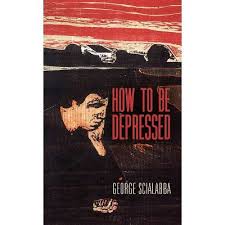 Depression forces itself through the cracks of one’s life, finding the weak spots particular to the person it inundates. Like consciousness itself, depression seems to dwell in that hazy realm where matter and spirit meet, and we turn inward to pursue its elusive essence. Exploring what caused a person’s depression, however, what set it off on the particular course it ran, necessarily ends in an overdetermined tangle—one reason why the shelves overflow with depression memoirs. We keep trying to pin depression down, but fail again and again. Styron’s depression set upon him when he was around sixty years old, likely “triggered” when he suddenly gave up alcohol and began taking a dangerous sleeping medication. But as Styron meditates on what happened to him, the chain of causation extends ever backward—he realizes three main characters in his novels kill themselves, a fact that suggests the storm had been gathering for many years. Then he presses on to childhood wounds. Would a man who’d led a different life sink into depression after he quit drinking? Styron gets to the end of Darkness Visible and confesses, “The very number of hypotheses is testimony to the malady’s all but impenetrable mystery.”
Depression forces itself through the cracks of one’s life, finding the weak spots particular to the person it inundates. Like consciousness itself, depression seems to dwell in that hazy realm where matter and spirit meet, and we turn inward to pursue its elusive essence. Exploring what caused a person’s depression, however, what set it off on the particular course it ran, necessarily ends in an overdetermined tangle—one reason why the shelves overflow with depression memoirs. We keep trying to pin depression down, but fail again and again. Styron’s depression set upon him when he was around sixty years old, likely “triggered” when he suddenly gave up alcohol and began taking a dangerous sleeping medication. But as Styron meditates on what happened to him, the chain of causation extends ever backward—he realizes three main characters in his novels kill themselves, a fact that suggests the storm had been gathering for many years. Then he presses on to childhood wounds. Would a man who’d led a different life sink into depression after he quit drinking? Styron gets to the end of Darkness Visible and confesses, “The very number of hypotheses is testimony to the malady’s all but impenetrable mystery.”
more here.
What Comes After Farce?
Tim Griffin at Artforum:
 SURVEYING OUR CULTURAL LANDSCAPE through the prepositional prism of after is hardly a new approach among critics and historians writing on art during the past quarter century. Yet, as articulated in the title of Hal Foster’s new book, the premise is newly intriguing for being tethered to—and eclipsed in blunt rhetorical force by—the sad comedy of “farce.” Here Foster borrows the term from Marx’s famous adage regarding the French bourgeoisie’s willingness in 1851 to cede democratic values to a second Bonaparte emperor some fifty years after the first—a scenario that resonates strongly with our circumstances today, Foster suggests, insofar as Donald Trump’s arrival on the American scene must be understood not as a singularity but rather as another iteration of the authoritarian impulses that originally took root in the wake of 9/11. If “alternative facts” and conspiracy theories now flourish along the banks of the mainstream, they first needed the rich soil fertilized by the nationalist kitsch proffered at the start of the second Iraq war. To bolster his point, Foster cites novelist Milan Kundera’s observation that “in the realm of totalitarian kitsch all answers are given in advance and preclude any questions,” adding that such an epistemology met the fuel of populist affect at the dawn of the 2000s.
SURVEYING OUR CULTURAL LANDSCAPE through the prepositional prism of after is hardly a new approach among critics and historians writing on art during the past quarter century. Yet, as articulated in the title of Hal Foster’s new book, the premise is newly intriguing for being tethered to—and eclipsed in blunt rhetorical force by—the sad comedy of “farce.” Here Foster borrows the term from Marx’s famous adage regarding the French bourgeoisie’s willingness in 1851 to cede democratic values to a second Bonaparte emperor some fifty years after the first—a scenario that resonates strongly with our circumstances today, Foster suggests, insofar as Donald Trump’s arrival on the American scene must be understood not as a singularity but rather as another iteration of the authoritarian impulses that originally took root in the wake of 9/11. If “alternative facts” and conspiracy theories now flourish along the banks of the mainstream, they first needed the rich soil fertilized by the nationalist kitsch proffered at the start of the second Iraq war. To bolster his point, Foster cites novelist Milan Kundera’s observation that “in the realm of totalitarian kitsch all answers are given in advance and preclude any questions,” adding that such an epistemology met the fuel of populist affect at the dawn of the 2000s.
more here.
This Band-Aid-Like Patch Could Detect Early COVID-19 Symptoms
Courtney Sexton in Smithsonian:
 Humans are almost constantly connected to devices and electronics that generate a significant amount of data about who they are and what they do. Many commercially available products like Fitbits, Garmin trackers, Apple watches and other smartwatches are designed to help users take control of their health, and tailor activities to their lifestyle. Even something as unobtrusive to wear as a ring can collect data on sleep patterns, body temperature, heart rate variability, calorie burn, and steps, and even go a step beyond to analyze these biostatistics and package the information so it can be read on a user’s smartphone. Similar, less common but more precise monitoring devices are also being used at clinics and hospitals to help health care providers individualize treatments for a range of conditions from cardiac care to stroke rehabilitation. Researchers working to contain COVID-19 are increasingly turning to these sleek new wearables for a diagnostic solution. But there is some debate about the best way to do so. Can commercially available devices be leveraged as a tool, or would clinical-grade wearables be more effective?
Humans are almost constantly connected to devices and electronics that generate a significant amount of data about who they are and what they do. Many commercially available products like Fitbits, Garmin trackers, Apple watches and other smartwatches are designed to help users take control of their health, and tailor activities to their lifestyle. Even something as unobtrusive to wear as a ring can collect data on sleep patterns, body temperature, heart rate variability, calorie burn, and steps, and even go a step beyond to analyze these biostatistics and package the information so it can be read on a user’s smartphone. Similar, less common but more precise monitoring devices are also being used at clinics and hospitals to help health care providers individualize treatments for a range of conditions from cardiac care to stroke rehabilitation. Researchers working to contain COVID-19 are increasingly turning to these sleek new wearables for a diagnostic solution. But there is some debate about the best way to do so. Can commercially available devices be leveraged as a tool, or would clinical-grade wearables be more effective?
In April, the Journal of the American Medical Association identified fever, cough and shortness of breath as primary symptoms in both positive and false negative COVID-19 cases. Around the same time, medical thought leaders in the Chicago area approached John Rogers, the director of Northwestern University’s Querrey Simpson Institute for Bioelectronics. Rogers and his team are known for developing next-generation, flexible, wearable devices with clinical-grade monitoring capability that mount on relevant body areas. The patches look and feel much like a Band-Aid, but contain biosensors, onboard memory, data processing and wireless transmission features. The quality of data the devices can capture is high enough that they can reliably be used in settings and on patients with limited hospital access to run specialty-care tests like electrocardiograms (EKGs). Others reduce the need for complicated machines used to monitor premature infants in intensive care units.
More here.
Wednesday Poem
Exit Strategy
Tell me there is a way to believe it all,
an exit strategy with groggy murmurs
of nothing but rest and a quiet universe.
All I can think of is my child, asleep
in bed, dealing with whatever birthright
his dreams afford his fears, waiting to wake.
Sometimes I feel like Kepler, poised to inherit
pages of wrinkled data, but grumbling,
What a holy-fucking mess Tycho left behind.
Under the surface of the crowd’s rumble
is a song. We could have danced, you know,
to the how-not-why of these perfect heartbeats.
It’s true. You’ve not been asked to understand.
You’ve been asked to listen, and work it out.
by George Murray
from Rush to Here
Nightwood Editions, 2007
Hood: Trailblazer of the Genomics Age
Luke Timmerman in Undark:
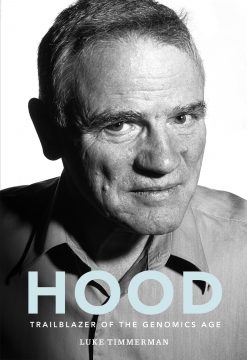 TWO WEEKS BEFORE Christmas 1999, Lee Hood appeared to have it all: A loving family. Money. Fame. Power. He counted Bill Gates, one of the world’s richest men, as a friend and supporter. Eight years earlier, Gates had given the University of Washington $12 million to lure the star biologist from Caltech in what the Wall Street Journal called a “major coup.” Hood’s assignment on arrival: build a first-of-its-kind research department at the intersection of biology, computer science, and medicine. Even at 61, the former high school football quarterback could still do 100 pushups in a row. He ran at least three miles a day. He climbed mountains. He traveled the world to give scientific talks to rapt audiences. At a time when many men slow down, Hood maintained a breakneck pace, sleeping just four to five hours a night. He owned a luxurious art-filled mansion on Lake Washington, but otherwise cared little for the finer things in life, sporting a cheap plastic wristwatch and driving an aging Toyota Camry. Those who worked closely with him said he still had the same wonder and enthusiasm for science he had as a student.
TWO WEEKS BEFORE Christmas 1999, Lee Hood appeared to have it all: A loving family. Money. Fame. Power. He counted Bill Gates, one of the world’s richest men, as a friend and supporter. Eight years earlier, Gates had given the University of Washington $12 million to lure the star biologist from Caltech in what the Wall Street Journal called a “major coup.” Hood’s assignment on arrival: build a first-of-its-kind research department at the intersection of biology, computer science, and medicine. Even at 61, the former high school football quarterback could still do 100 pushups in a row. He ran at least three miles a day. He climbed mountains. He traveled the world to give scientific talks to rapt audiences. At a time when many men slow down, Hood maintained a breakneck pace, sleeping just four to five hours a night. He owned a luxurious art-filled mansion on Lake Washington, but otherwise cared little for the finer things in life, sporting a cheap plastic wristwatch and driving an aging Toyota Camry. Those who worked closely with him said he still had the same wonder and enthusiasm for science he had as a student.
Yet here, at the turn of the millennium, Hood was miserable.
His once-controversial vision for “big science” was becoming a reality through the Human Genome Project, yet he didn’t feel like a winner. He felt suffocated. He had a new vision, a more far-sighted and expansive one that he insisted would revolutionize healthcare. But he felt the university bureaucrats were blind to the opportunity. They kept getting in his way. It was time, Hood felt, to have a difficult conversation with his biggest supporter. On a typically dark and gray December day in Seattle, Hood climbed into his dinged-up Camry and drove across the Highway 520 floating bridge over Lake Washington to meet Gates, the billionaire CEO of Microsoft. Hood shared some startling news: he had resigned his endowed Gates-funded professorship at UW. He wanted to start a new institute free from university red tape. It was the only way to fulfill his dream for biology in the 21st century.
Gates was well aware of Hood’s record of achievements and its catalytic potential. Hood had led a team at Caltech that invented four research instrument prototypes in the 1980s, including the first automated DNA sequencer. The improved machines that followed made the Human Genome Project possible and transformed biology into more of a data-driven, quantitative science. Researchers no longer had to spend several years — an entire graduate student’s career — just to determine the sequence of a single gene. With fast, automated sequencing tools, a new generation of biologists could think broadly about the billions of units of DNA.
More here.
Tuesday, July 14, 2020
The Calculus of Ought: Quantification is more than merely a means of communication and persuasion in a fragmented culture
James Davison Hunter and Paul Nedelisky in The Hedgehog Review:
 There was a time not long ago when most educated people believed that science would one day explain everything—not only the workings of the physical world but also the secrets to the good life. Such confidence perhaps peaked in the early nineteenth century, when Jeremy Bentham proposed utilitarianism as a way of making happiness quantifiable and the positivist Auguste Comte sought a social physics to apply immutable scientific laws to all aspects of human life. But by the early twentieth century, that boundless faith in science had been badly shaken. Within the academy, philosopher G.E. Moore was widely thought to have refuted empirical approaches to ethics. Within the Temple of Science, the pace of new discoveries forced researchers to acknowledge how tentative and contingent their findings were. And ever newer sciences such as quantum physics made people wonder whether there was anything regular or predictable (or even ultimately material) about even the physical world. As for relying on science and the calculus of the greater good to tell us how to live our lives—particularly after the serial horrors of two world wars—that notion increasingly met with skepticism, if not outright derision. Today, most thoughtful people dismiss the old scientism as crudely reductive, and certainly irrelevant as a source of moral and ethical guidance. Except…
There was a time not long ago when most educated people believed that science would one day explain everything—not only the workings of the physical world but also the secrets to the good life. Such confidence perhaps peaked in the early nineteenth century, when Jeremy Bentham proposed utilitarianism as a way of making happiness quantifiable and the positivist Auguste Comte sought a social physics to apply immutable scientific laws to all aspects of human life. But by the early twentieth century, that boundless faith in science had been badly shaken. Within the academy, philosopher G.E. Moore was widely thought to have refuted empirical approaches to ethics. Within the Temple of Science, the pace of new discoveries forced researchers to acknowledge how tentative and contingent their findings were. And ever newer sciences such as quantum physics made people wonder whether there was anything regular or predictable (or even ultimately material) about even the physical world. As for relying on science and the calculus of the greater good to tell us how to live our lives—particularly after the serial horrors of two world wars—that notion increasingly met with skepticism, if not outright derision. Today, most thoughtful people dismiss the old scientism as crudely reductive, and certainly irrelevant as a source of moral and ethical guidance. Except…
More here.
Emerging cases of Covid-19 reinfection suggest herd immunity could be wishful thinking
D. Clay Ackerly in Vox:
 “Wait. I can catch Covid twice?” my 50-year-old patient asked in disbelief. It was the beginning of July, and he had just tested positive for SARS-CoV-2, the virus that causes Covid-19, for a second time — three months after a previous infection.
“Wait. I can catch Covid twice?” my 50-year-old patient asked in disbelief. It was the beginning of July, and he had just tested positive for SARS-CoV-2, the virus that causes Covid-19, for a second time — three months after a previous infection.
While there’s still much we don’t understand about immunity to this new illness, a small but growing number of cases like his suggest the answer is yes.
Covid-19 may also be much worse the second time around. During his first infection, my patient experienced a mild cough and sore throat. His second infection, in contrast, was marked by a high fever, shortness of breath, and hypoxia, resulting in multiple trips to the hospital.
Recent reports and conversations with physician colleagues suggest my patient is not alone.
More here.
NASA Voyager Recordings
Recomposing The Soundscape of The Intensive Care Unit
Sally O’Reilly at Cabinet Magazine:
 Sonic branding is big business. Should you be interested, you could commission the composition of a long-form anthem, a sonic logo, or the sounds your product emits during user operation. Computer and video game companies lavish much time, effort, and money on the second and third of these. For a canonic commission, there is the Windows 95 start-up sound designed by Brian Eno. A more guerilla affair was Jim Reekes’s Apple computer start-up chime, which he snuck onto a new Mac model without permission circa 1992.13 Interestingly, the sound he was so driven to replace was “absolutely the most inharmonic dissonant sound you could make”—a tritone. There are many other, less substantiated stories out there: that one-eighth of the bits of the original Sonic the Hedgehog game were taken up by the SEGA sonic logo; that the first note in the Intel logo comprises twenty sounds, one of which is an anvil being hit; that the first Facebook messenger “ding” was an F major seventh, which comprises the pitches F, A, C, and E.
Sonic branding is big business. Should you be interested, you could commission the composition of a long-form anthem, a sonic logo, or the sounds your product emits during user operation. Computer and video game companies lavish much time, effort, and money on the second and third of these. For a canonic commission, there is the Windows 95 start-up sound designed by Brian Eno. A more guerilla affair was Jim Reekes’s Apple computer start-up chime, which he snuck onto a new Mac model without permission circa 1992.13 Interestingly, the sound he was so driven to replace was “absolutely the most inharmonic dissonant sound you could make”—a tritone. There are many other, less substantiated stories out there: that one-eighth of the bits of the original Sonic the Hedgehog game were taken up by the SEGA sonic logo; that the first note in the Intel logo comprises twenty sounds, one of which is an anvil being hit; that the first Facebook messenger “ding” was an F major seventh, which comprises the pitches F, A, C, and E.
more here.
Secrets of the spitting cobra
The Beinart Controversy over the End of the Two-State Solution and Juan Cole On Palestinian Statelessness
Juan Cole in Informed Comment:
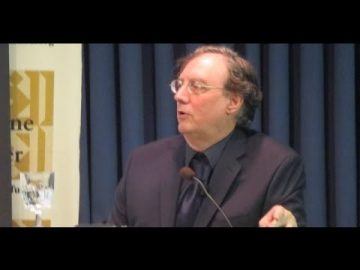 Peter Beinart, a professor of journalism at the City University of New York, has caused a stir in the past week with articles and interviews in which he says he has given up on the project of a Jewish state in Israel. He still likes the idea of a Jewish “homeland.” What clearly drives his position is the collapse of the two-state solution around the year 2000. By now it is clear that there cannot be a Palestinian state, what with 650,000 Israeli settlers in the Palestinian West Bank (if you count the parts of it that Israel annexed and made part of its district of Jerusalem). Not only that, but the rise of an Israeli illiberalism inside Israel proper that is determined to make the over 20% of the population that is not Jewish permanent second-class citizens underlines for him that Jewish power as now configured as a zero-sum game. Jews have rights, citizenship, and sovereignty inside Israel; non-Jews have no sovereignty even though they are Israeli citizens, and their rights are fewer.
Peter Beinart, a professor of journalism at the City University of New York, has caused a stir in the past week with articles and interviews in which he says he has given up on the project of a Jewish state in Israel. He still likes the idea of a Jewish “homeland.” What clearly drives his position is the collapse of the two-state solution around the year 2000. By now it is clear that there cannot be a Palestinian state, what with 650,000 Israeli settlers in the Palestinian West Bank (if you count the parts of it that Israel annexed and made part of its district of Jerusalem). Not only that, but the rise of an Israeli illiberalism inside Israel proper that is determined to make the over 20% of the population that is not Jewish permanent second-class citizens underlines for him that Jewish power as now configured as a zero-sum game. Jews have rights, citizenship, and sovereignty inside Israel; non-Jews have no sovereignty even though they are Israeli citizens, and their rights are fewer.
More here.
The Barbarian at the Gate
Philip Parker at Literary Review:
 Like many a subsequent empire, Rome had a highly ambivalent relationship with the outsiders it needed to fuel its commerce, stock its slave markets and man its armies. In this particular case, those outsiders were not colonised peoples but the Germanic barbarian tribes living in areas against which the waves of Roman imperialism had only lapped during the empire’s high tide, before it began to recede in the third century. The Danube basin, where Alaric grew up in the 370s, seems from Boin’s account an idyllic place: his family home bore the bucolic name Pine Tree Island and Boin conjures an image of infant Goths listening to tales of their heroic ancestor King Berig, who had led his people – perhaps understandably – out of a homeland of ‘quaking bogs’ called Scandza. Yet it was also a place of profound danger: of slave traders who kidnapped young girls in order to sell them south of the river, of ghosts and demons and, most threatening of all, of predatory Roman officials whose actions in trying to starve would-be migrants who were crossing the imperial frontier led to the first mass Gothic raids on the Balkans.
Like many a subsequent empire, Rome had a highly ambivalent relationship with the outsiders it needed to fuel its commerce, stock its slave markets and man its armies. In this particular case, those outsiders were not colonised peoples but the Germanic barbarian tribes living in areas against which the waves of Roman imperialism had only lapped during the empire’s high tide, before it began to recede in the third century. The Danube basin, where Alaric grew up in the 370s, seems from Boin’s account an idyllic place: his family home bore the bucolic name Pine Tree Island and Boin conjures an image of infant Goths listening to tales of their heroic ancestor King Berig, who had led his people – perhaps understandably – out of a homeland of ‘quaking bogs’ called Scandza. Yet it was also a place of profound danger: of slave traders who kidnapped young girls in order to sell them south of the river, of ghosts and demons and, most threatening of all, of predatory Roman officials whose actions in trying to starve would-be migrants who were crossing the imperial frontier led to the first mass Gothic raids on the Balkans.
more here.
Tuesday Poem
Hummingbird
One day in a lifetime
I saw one with wings
a pipesmoke blur
shaped like half a kiss
and its raspberry-stone
heart winked fast
in a thumbnail of a breast.
In that blink it
was around a briar
and out of sight, but
I caught a flash
of its brain
where flowers swing
udders of sweet cider;
and we pass as thunderclouds or,
dangers like death, earthquake, and war,
ignored because it’s no use worrying ….
By him I mean. Responsibility
Against the threat of termination-
by war or other things
is given us as by a deity.
by Milton Acorn
from Dig Up My Heart- Selected Poems -1952-83
McClelland & Stewart, Toronto, 1983
How Pandemics Wreak Havoc—and Open Minds
Lawrence Wright in The New Yorker:
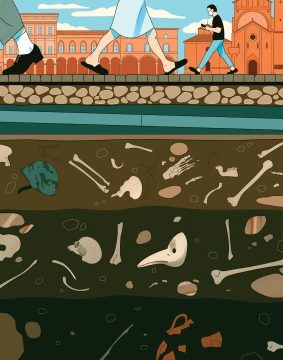 Italy at the beginning of the fourteenth century was a conglomeration of prosperous city-states that had broken free of the feudal system. Some of them, such as Venice, formed merchant republics, which became seedbeds for capitalism. Venice and other coastal cities, including Genoa, Pisa, and Amalfi, set up trading networks and established outposts throughout the Mediterranean and as far away as the Black Sea. Other Italian cities, such as Bologna, became free communes, which meant that peasants fleeing feudal estates were granted freedom once they entered the city walls. Serfs became artisans. A middle class began to form. The early fourteenth century was robust and ambitious. Then, suddenly, people began to die.
Italy at the beginning of the fourteenth century was a conglomeration of prosperous city-states that had broken free of the feudal system. Some of them, such as Venice, formed merchant republics, which became seedbeds for capitalism. Venice and other coastal cities, including Genoa, Pisa, and Amalfi, set up trading networks and established outposts throughout the Mediterranean and as far away as the Black Sea. Other Italian cities, such as Bologna, became free communes, which meant that peasants fleeing feudal estates were granted freedom once they entered the city walls. Serfs became artisans. A middle class began to form. The early fourteenth century was robust and ambitious. Then, suddenly, people began to die.
Bologna was a stronghold of medical teaching. The city’s famous university, established in 1088, is the oldest in the world. “What they had we call scholastic medicine,” Pomata told me. “When we say ‘scholastic,’ we mean something that is very abstract, not concrete, not empirical.” European scholars at the time studied a number of classical physicians—including Hippocrates, the Greek philosopher of the fifth century B.C. who is considered the father of medicine, and Galen, the second-century Roman who was the most influential medical figure in antiquity—but scholastic medicine was confounded with astrological notions. When the King of France sought to understand the cause of the plague, the medical faculty at the University of Paris blamed a triple conjunction of Saturn, Jupiter, and Mars in the fortieth degree of Aquarius, which had occurred on March 20, 1345.
…Before arriving in Italy, the rampaging contagion had already killed millions of people as it burned through China, Russia, India, Persia, Syria, and Asia Minor. It was said that there were entire territories where nobody was left alive. The source of the disease was sometimes thought to be “miasma,” or air that was considered unhealthy, such as sea breezes. Paradoxically, there was also a folk belief that attendants who cleaned latrines were immune, which led some people to confine themselves for hours a day amid human waste, absorbing the presumed medicinal odors.
More here.
New ‘Liquid Biopsy’ Shows Early Promise in Detecting Cancer
Francis Collins in NIH Director’s Blog:
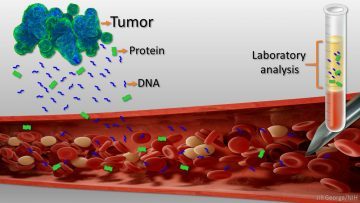 Early detection usually offers the best chance to beat cancer. Unfortunately, many tumors aren’t caught until they’ve grown relatively large and spread to other parts of the body. That’s why researchers have worked so tirelessly to develop new and more effective ways of screening for cancer as early as possible. One innovative approach, called “liquid biopsy,” screens for specific molecules that tumors release into the bloodstream.
Early detection usually offers the best chance to beat cancer. Unfortunately, many tumors aren’t caught until they’ve grown relatively large and spread to other parts of the body. That’s why researchers have worked so tirelessly to develop new and more effective ways of screening for cancer as early as possible. One innovative approach, called “liquid biopsy,” screens for specific molecules that tumors release into the bloodstream.
Recently, an NIH-funded research team reported some encouraging results using a “universal” liquid biopsy called CancerSEEK [1]. By analyzing samples of a person’s blood for eight proteins and segments of 16 genes, CancerSEEK was able to detect most cases of eight different kinds of cancer, including some highly lethal forms—such as pancreatic, ovarian, and liver—that currently lack screening tests. In a study of 1,005 people known to have one of eight early-stage tumor types, CancerSEEK detected the cancer in blood about 70 percent of the time, which is among the best performances to date for a blood test. Importantly, when CancerSEEK was performed on 812 healthy people without cancer, the test rarely delivered a false-positive result. The test can also be run relatively cheaply, at an estimated cost of less than $500.
Cancers arise when gene mutations occur in individual cells, dysregulating their normal growth and allowing them to divide without the usual restraints. As the clump of cancer cells expands, some die and bits of their mutated DNA can end up in the bloodstream. Liquid biopsies then search the blood for those bits of DNA carrying mutations associated with cancer. In 2016, the FDA approved the first liquid biopsy test for detecting a single mutation in patients with non-small cell lung cancer for use in guiding treatment decisions of people already known to have this type of cancer [2]. But developing a liquid biopsy test that could screen apparently healthy people for a variety of early cancers has proven a much greater challenge.
More here.
Sunday, July 12, 2020
The Novels of Tension Between Freedom and Disaster
Tim Parks in the New York Review of Books:

After I wrote about novels characterized by their focus on belonging—the concern with being in or out of a certain community, worthy or unworthy of its membership—a reader suggested I should have included Mark Twain in my list, mentioning The Adventures of Tom Sawyer and The Adventures of Huckleberry Finn. It’s true that Twain is wonderfully attuned to the communities he describes, their speech and customs. But what drives the plot of Huckleberry Finn is the desire for freedom, Huck’s desire, Jim’s desire. The suffocating shirt collar is rejected for the great outdoors. Liberty trumps belonging at every turn. Twain rubs this in with his account of the feud between the Grangerford and Shepherdson clans, two families obsessed by belonging and family identity to the exclusion of all other values. Huck’s instinct is to hightail it out of there.
But a free life is a precarious life, precarious as the river with its flotsam of corpses and criminals. A man striking for freedom might occasionally reflect he had been safer with his chains. Here is a source of inner conflict. Independent and free on their raft, Huck and Jim are entirely unprotected, from man or nature. At the end of the book, Huck realizes some accommodation must be made with community, for the security and opportunities it offers; but by that point, he has established an inner independence.
More here.
